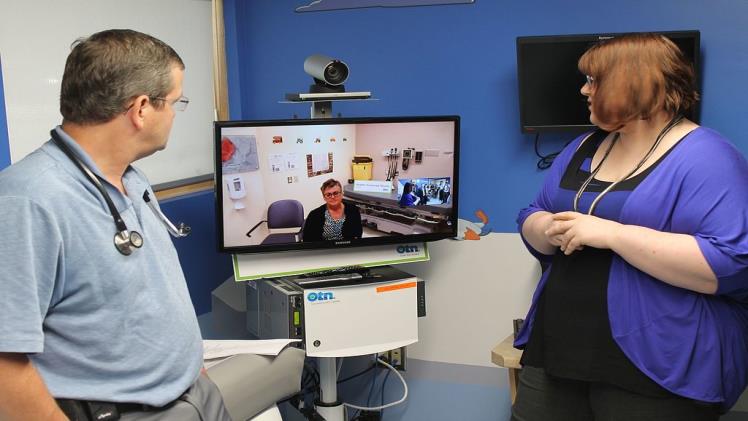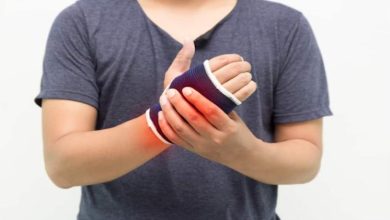What is the difference between remote patient monitoring and telehealth?

It is essential to differentiate between telehealth and Remote Patient Monitoring (RPM). Telehealth is the umbrella term that involves all the electronic media such as remote patient devices, email, fax, and telephone. These remote patient devices are utilized to gather the patient data and transfer the data to monitor and interpret the performance. Telehealth is also known as Telemedicine.
visit here for more info about Cool Animals
Telehealth requires internet access on mobile phones, laptops, tablets, smartphones and computers for online one-to-one doctor-patient interaction. Medical transcriptionists play an essential role while translating patient data. U Control Billing provides the best medical transcription services with patient satisfaction and will help you grow your medical practice.
Remote patient monitoring uses specific devices to monitor and interpret the real-time interaction between patients and doctors. It is used remotely for collecting, transferring, evaluating, and reporting patient data through devices. Remote Patient Monitoring (RPM) is one of the popular technologies used in the United States healthcare systems to improve outcomes. This type of technology promotes the patient and provider relationship and provides the organized streamlining of the health data in real-time. U Control Billing is also a medical billing company in the United States that can help you with medical-related services; they provide medical billing and credentialing services for better results and performance of the healthcare practices.
What are the options in telehealthcare?
There are several options in telehealthcare, which are as follows:
- Patients can contact their doctors by using remote monitoring devices. Both can send and receive messages using secure file exchange, email and secure messaging.
- Patients can contact their doctors anywhere, anytime.
- Patients can reach out to their doctors via video or audio call.
What are the uses of healthcare?
You can get a wide variety of help through telemedicine. It is beneficial to screen and further develop persistent medical problems, for example, constant ailments, medicine or prescription changes.
Your medical services supplier will choose whether telehealth is appropriate for your health. Ask your medical care supplier’s office about telehealth choices as well.
Telehealthcare services include:
- Repeating conditions like headaches, urinary lot contaminations and UTIs.
- Psychological wellness treatment, including on-web treatment, advising, and prescription administration
- Therapy and follow-up meetings for attention deficit hyperactivity disorder (ADHD) and attention deficit disorder (ADD)
- Prescription management
- Critical care issues like cough, stomach ache, cold and fever etc
- Post-surgical development
- occupational therapy and physical therapy
- Medical lab x-rays, tests and results
- Remote observing administrations assist you with following your health objectives and managing constant circumstances like hypertension, elevated cholesterol and diabetes.
- Skin infections
Your medical care supplier may likewise request that you send data that will assist with working on your wellbeing:
- Pulse, glucose, weight or essential data of the patient.
- Pictures of an injury, eye or skin condition
- A journal or record of your side effects
- Clinical records might be verified with another medical care supplier, like lab tests or X-rays.
Medical care suppliers can send you data to deal with your wellbeing at home:
- Notices or suggestions to do recovery activities or take medicines
- New ideas for further developing eating regimen, versatility, or stress on the board
- Point by point guidelines on the most proficient method to proceed with your consideration at home
- Consolation to stay with your treatment
What are the types of telehealthcare?
Although wide assortments of telehealth exist, four principal classifications exist in the present clinical industry. The advantages of every classification change and can uphold you and your patients in various ways relying upon your medical needs to get a complete range of their wellbeing.
There are four types of healthcare which are as below:
Mobile Health (mHealth)
Mobile health utilizes brilliant gadgets such as tablets, smartwatches and smart cell phones and the wellbeing-based programming applications produced for these gadgets support proceeded with medical services. Numerous health monitoring applications exist now and can screen a diabetic patient’s daily glucose level to water consumption. These applications help energize a better way of life and behavior. Furthermore, it can coordinate with a patient’s well-being records.
In the consistently developing telehealth market, many sorts of telehealth can further build your patients’ way of life, ways of behaving and support their general wellbeing. Similarly, telehealth gives a full extent of your patients’ day-to-day vitals, permitting you to change their well-being into a healthy lifestyle.
Remote Patient Monitoring (RPM)
Remote Patient Monitoring is utilized for well-developed or urban regions. RPM is the informational patient’s health data from a patient or occupant in one area that transmits electronically to medical services professionals, providers, doctors and nurses for checking and survey. RPM is particularly useful in urban areas to avoid any mishap with the patient’s health.
Live Video-Conferencing
The unique kind of telehealth, live video conferencing, is a live, two-way video-based gathering between a patient and their medical services supplier. Everybody generally utilizes it, from doctors in neighborhood clinics to suppliers who own confidential practices. Live video-conferencing wipes out drive time and stress for the supplier and patient. It carries medical services to regions with fewer medical care choices.
Asynchronous Video (AKA Store-and-Forward)
Nonconcurrent video is the electronic conveyance of a patient’s reported well-being history beyond continuous, utilized by a medical care supplier. It is usually used in countries when suppliers are talking with an expert in another area. It is the kind of telehealth that carries medical services to parts with less trained and professional doctors.
What are some of the Remote Patient Monitoring (RPM) devices?
Some of the Remote Patient Monitoring Devices (RPM) in the markets are as follows:
- Heart Rate
- Saturation Levels
- Blood pressure monitors
Let us Wrap It Up!
Remote Patient Monitoring (RPM) is one of the popular technologies used in the United States healthcare systems to improve outcomes, and it is also cost-efficient. This type of technology promotes the patient and provider relationship and provides the organized streamlining of the health data in real-time. Moreover, RPM is an innovative, affordable, and cost-efficient technology which helps smaller-scale organizations to larger-scale businesses. It is also very beneficial for new companies other than hospitals and clinics. RPM refers to the specific technology used to transmit information between patients and physicians electronically, and it is just one delivery system within the broader telemedicine industry. However, the challenges should be in mind before applying RMP technology worldwide.
Your medical billing specialist is responsible for your medical performance and billing services. When you or a patient calls, you should get a response from the medical billing companies. UControl Billing is a professional billing company with a team of professionals, and they will increase revenue and reimbursements. If you need any further assistance, kindly reach out to them!




